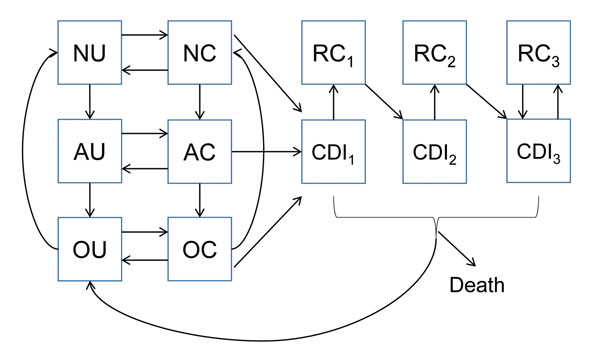Volume 22, Number 4—April 2016
Research
Quantifying Transmission of Clostridium difficile within and outside Healthcare Settings
Figure 1

Figure 1. Compartmental model structure for Clostridium difficile infection (CDI) within each setting (hospital, long-term care facility, and community). Patients are classified as not receiving antimicrobial drugs (N), are receiving antimicrobial drugs (A), having a recent history of receiving antimicrobial drugs (O), uncolonized (U), asymptomatically colonized (C), symptomatically infected (CDI), or colonized and subject to recurrence (RC) of CDI. Arrows indicate changes in individual epidemiologic status. Subscripts indicate primary, secondary, or tertiary CDI.
Page created: March 15, 2016
Page updated: March 15, 2016
Page reviewed: March 15, 2016
The conclusions, findings, and opinions expressed by authors contributing to this journal do not necessarily reflect the official position of the U.S. Department of Health and Human Services, the Public Health Service, the Centers for Disease Control and Prevention, or the authors' affiliated institutions. Use of trade names is for identification only and does not imply endorsement by any of the groups named above.